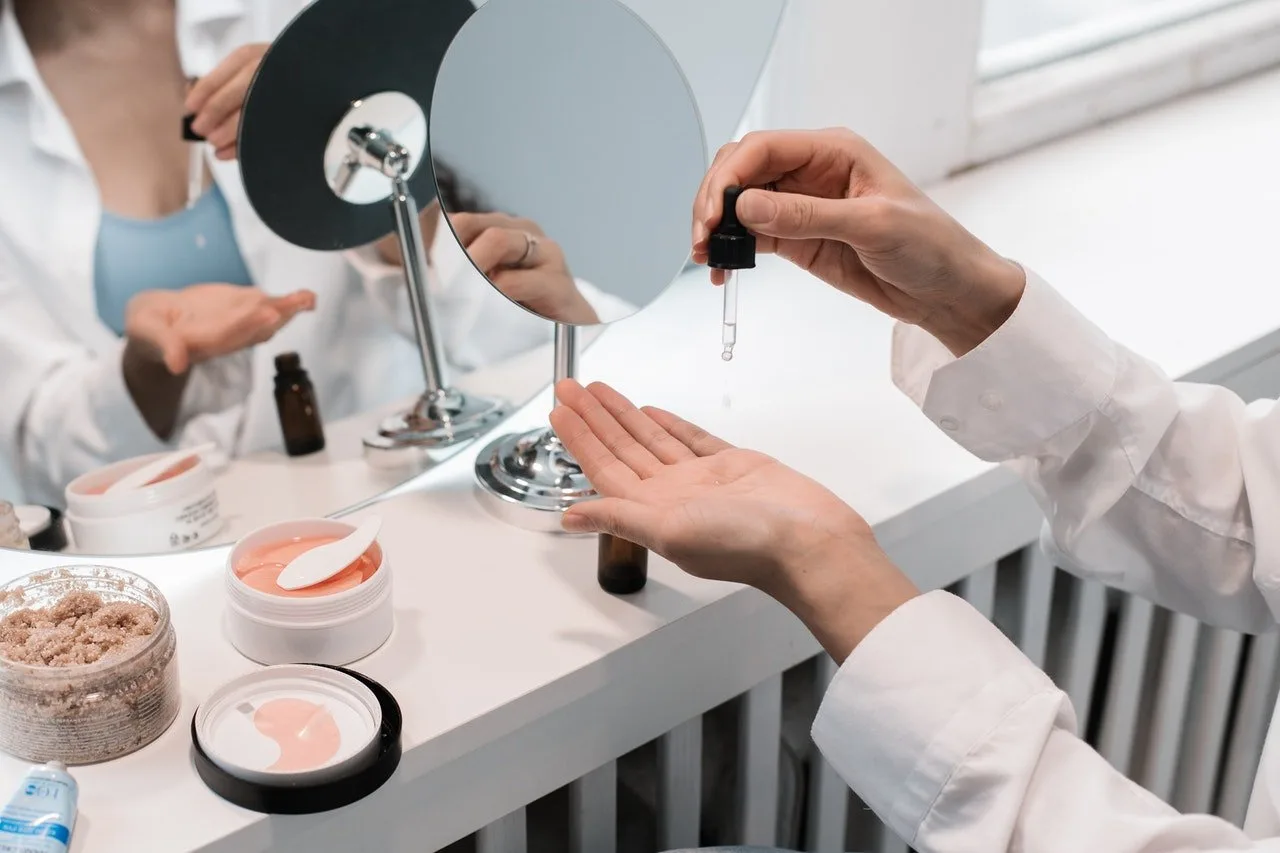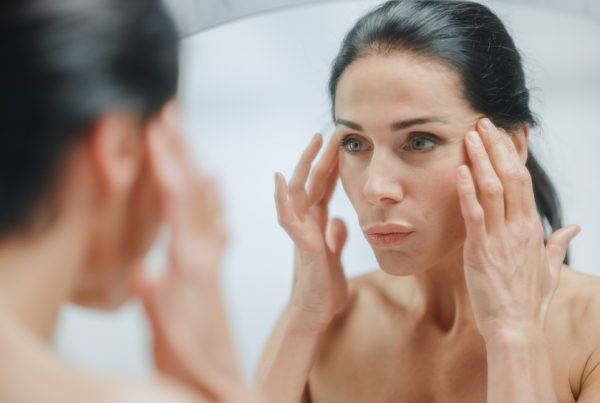As consumers, we must familiarize ourselves with popular ingredients added to our toxic beauty products. The public has been made continuously aware of the carcinogen benzene and the fact that increased levels of this carcinogen are found in products from dry shampoo to sunscreen. The latest occurrence is in acne products containing benzoyl peroxide. It’s also important to note that the compound wasn’t intentionally added to these products. It appears to be a byproduct during production or degradation.
What is Benzene, and what is it used for?
Benzene is a colorless, flammable liquid with a sweet odor. It evaporates quickly when exposed to air. Benzene is formed from natural processes, such as volcanoes and forest fires, but most people are exposed to benzene through human activities. Benzene is one of the 20 most widely used chemicals in the United States.
It is used mainly to make other chemicals, including plastics, resins, lubricants, rubbers, dyes, detergents, drugs, and pesticides. In the past, it was also commonly used as an industrial solvent (a substance that can dissolve or extract other substances) and as a gasoline additive, but these uses have been greatly reduced in recent decades.
Benzene is also a natural part of crude oil, gasoline (and therefore motor vehicle exhaust), and cigarette smoke.
“While benzene is not intentionally being added to skin-care products, it can end up in them in the form of a contaminant or, as in the case of benzoyl peroxide, as a result of the breakdown of the ingredient,” says dermatologist Dr. Marisa Garshick. “While we haven’t seen benzene connected to benzoyl peroxide in the past, there have been prior concerns with benzene when it was found to be a contaminant in certain sunscreens through testing performed by the same lab.”
Acne products
Valisure is an independent laboratory and partner for quality that provides increased transparency and quality assurance throughout the healthcare industry. Valisure discovered elevated levels of benzene in benzoyl peroxide products from brands like CeraVe, Clinique, La Roche-Posay, and Proactiv. These levels were found after the products were incubated at 122°F for 18 days. Valisure detected over ten parts per million (ppm) of benzene in 42 products and 100 ppm in 17 products. The two products, in particular, contained over 1,500 ppm of benzene.
The Food and Drug Administration recommends that humans be exposed to no more than two ppm of benzene daily.
“While it is difficult to interpret these findings and how they would apply to real-world scenarios, it is important to remember that some people may keep their benzoyl peroxide products in the bathroom, in their gym bag outside, or in the car, where even though the temperatures may not reach 100°F, temperatures may be higher and potentially contribute to some product breakdown,” says Dr. Garshick. Products may also be exposed to extreme temperatures during transport on hot days.
However, it is still unknown how much topical benzene exposure can cause. “More information would be needed to better understand how much benzene gets absorbed by the skin and how this impacts overall health,” says Dr. Garshick.
Valisure is also behind many of the other benzene-in-beauty product studies. “It is important to note that these findings were released from an independent laboratory, and the methods used still need to be further investigated and validated,” says Dr. Garshick. “Overall, more data is needed to verify how to translate these findings into real life.”
Spray-on products
Over the years, Valisure has discovered benzene in products such as sunscreens and dry shampoos, leading to recalls from brands like Johnson & Johnson and Proctor & Gamble.
Following a 2021 J&J recall, a team of dermatologists examined data from the National Health and Nutrition Examination Surveys from 2003 to 2006 and 2009 to 2018 and found that sunscreen use is not associated with increased blood concentrations of benzene among adults in the United States.
Other examples of exposure
People are exposed mainly by breathing in air containing benzene. Benzene can also be absorbed through the skin during contact with a source such as gasoline, but because liquid benzene evaporates quickly, this is less common.
People can be exposed to benzene:
- At work
- In the environment
- When using some consumer products
The highest levels of exposure typically have been in the workplace, although high-level exposures have decreased greatly over the last several decades due to federal and state regulations.
Inhalation accounts for 95 to 99 percent of benzene exposure. According to the American Cancer Society, rates of acute myeloid leukemia (AML) have been found higher in those who work in industries chemical, shoemaking, and oil refining where they are exposed to high levels of benzene. Some studies have also suggested a link to other forms of leukemia and blood-related cancers, but the evidence is not as strong as that for AML.
Lab studies in animals like rats and mice have shown that benzene can cause different types of tumors. Especially when inhaled or swallowed. It can also cause chromosome changes in bone marrow cells in the lab. This is a change that is often seen in human leukemia cells. Evidence linking benzene to other forms of cancer is scant.
Workplace exposure
Workers in industries that make or use benzene can be exposed to this chemical. These include the rubber industry, oil refineries, chemical plants, shoe manufacturers, and gasoline-related industries. Others who may be exposed to benzene at work include steel workers and printers. Lab technicians, gas station employees, and firefighters are also on this list.
Community exposure
People can be exposed to benzene from gasoline fumes, automobile exhaust, emissions from some factories, and wastewater from certain industries. Benzene is commonly found in the air, but the levels in most places are usually very low.
Levels of benzene can be higher in enclosed spaces with unventilated fumes from gasoline, glues, solvents, paints, and art supplies. Areas with heavy traffic, gas stations, and areas near industrial sources may also have higher air levels.
Cigarette smoke (either from smoking yourself or from secondhand smoke) accounts for about half of the exposure to benzene in the United States. Benzene levels in rooms containing tobacco smoke can be many times higher than normal.
People can also be exposed to benzene in contaminated drinking water and some foods (although the levels are typically very low).
What should you do moving forward?
It is important not to panic if you have currently or previously been using any products found to contain benzene. “It is normal to feel concerned about these findings,” says Dr. Garshick. “And while there is no formal statement by the FDA at this time, it is reasonable to hold off on the use of the products listed until we have more information. It is also reasonable, until we get more information, to store your benzoyl products in cool temperatures and avoid excessive heat exposure.
That said, it is also important to remember that benzene is present in our natural environment, and while additional exposure should be avoided, it is important to remember that we are already getting exposed to benzene.”
Not only is it essential to avoid using products containing Benzene but limiting your environmental exposure is vital. Stay away from cigarette smoke, pump gas carefully, and limit the time you spend near idling car engines. Lastly, use common sense when dealing with any chemicals that might contain benzene.
References
Dr. Marisa Garshick’s quotes have been used from the InStyle article referenced below.
What Is Benzene and Why Is it in Skin Care? (instyle.com)
Benzene and Cancer Risk | American Cancer Society





![women [longevity live]](https://longevitylive.com/wp-content/uploads/2020/01/photo-of-women-walking-down-the-street-1116984-100x100.jpg)








